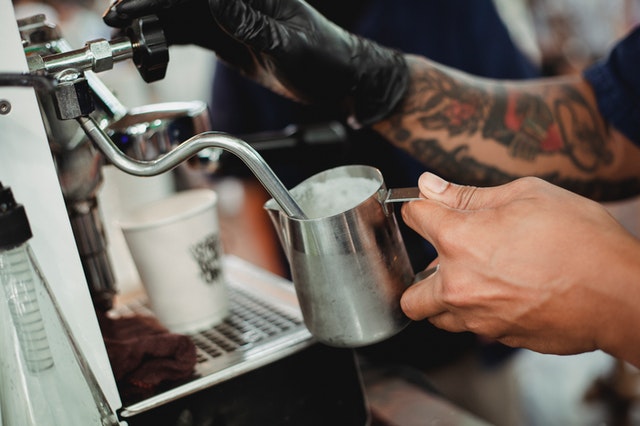Make sure you always start off with a cold pitcher (you can place it in the fridge beforehand). A stainless-steel pitcher works best for this job. Nonfat and low-fat milk are most commonly used—although regular milk can be easily steamed once you get a little practice.
Just fill the pitcher approximately one-third to one-half with the milk. The milk will expand during the process so make sure you don’t fill it over half. Put the nozzle of the steamer on the surface of the milk and turn the steam pressure all the way on.
As the steamer begins to froth the milk, lower the pitcher while the milk expands, keeping the nozzle approximately 2 inch under the surface of the milk. Be cautious not to allow the milk to boil, as it may overflow or have a slightly burnt taste.
When the froth that you’ve produced by steaming the milk starts to rise to the surface of the pitcher, you may turn the pressure down or take the pitcher away from the steamer, as the milk is now just on the verge of boiling.
If done right, the steamed milk will contain very small bubbles throughout the liquid, and the froth on top will have a sweet or light taste to it. You might screw up the steaming process a little the first couple of times you try it, but you will master the process if you keep at it.

Sello Rojo Colombian Coffee – Regular Ground – 425 grs
Credits:
The Big Book of Beverages
Master Making Coffee, Iced Tea, Juices, Infused Water, Alcoholic Cocktails, Smoothies, and Much More with Over 870 Recipes!
Stephanie Bennett,
Marissa Marie,
& John Carter




Comments are closed